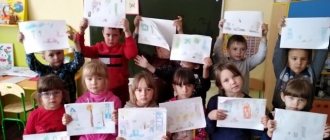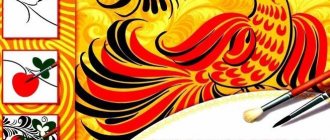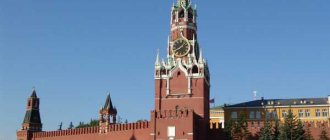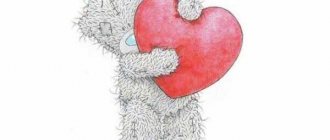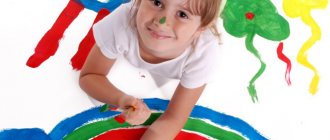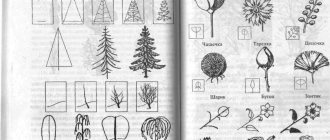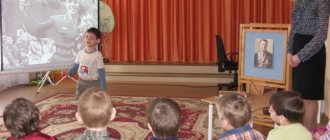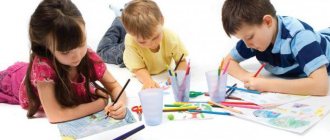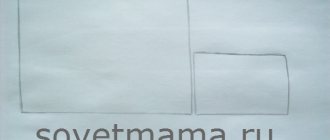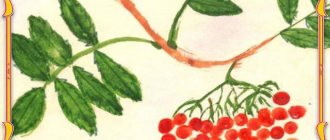Specific options within the theme “Birds”
According to T. Komarova’s fine arts program, in the preparatory group two lessons are devoted to drawing birds: this is drawing an illustration for the work of Mamin-Sibiryak “The Gray Neck” and “The Magic Bird”. However, the topic of birds is so interesting and multifaceted that the teacher clearly should not limit himself to only this. So, options for the feathered theme could be as follows:
- Owl-owl (a very bright image that can be depicted in different techniques).
- A flock of migratory birds (theme is proposed in autumn or spring).
- Cockerel is a golden comb (can be associated with some fairy tale, for example, “The Cockerel and the Bean Seed” or “The Tale of the Golden Cockerel” by A. S. Pushkin).
- Titmouse (you can draw on November 12 or not far from this date, when people celebrate Titmouse Day).
- Bullfinches on a branch (of course, this theme is offered in winter).
- Swallow (it’s good to connect the image with the fairy tale “Thumbelina”).
- Poultry (poultry yard as an option). A child can simultaneously portray a chicken, a rooster, a duck, a goose, a turkey, or one or the other.
- White-sided magpie.
- Swan on the lake (as a variant of the swan princess of A.S. Pushkin before her transformation into a girl or an illustration for Andersen’s fairy tale “Wild Swans”).
- Kargopol birds (drawing based on folk toys).
- Fairytale bird (Firebird).
Older preschoolers always find collective compositions interesting. The “Magic Bird” work is popular, when each child paints a feather to his own taste, and then a gorgeous tail is assembled from them (the teacher prepares the base in advance - the body of the bird).
Each child paints the feather according to their wishes, and together they make up the original tail of a fairy-tale bird.
Here again, you can take an individual approach and invite some children to color two feathers.
Another option for joint creativity is “Birds at the feeder.” The teacher draws a tree with branches and a feeder, and preschoolers complete the composition with birds.
The theme “Birds” encourages the creation of collective compositions
Read also
Topic of the week: “Poultry”
Topic of the week: “Poultry” Lesson 29. Chicken (Modeling from plasticine) Program content. Cultivate interest in fairy tales. Strengthen children's ability to sculpt objects consisting of several parts. Demonstration material. Toys - heroes of the fairy tale “The Ryaba Hen” (grandfather,
Theme of the week: “Wild birds”
Topic of the week: “Wild Birds” Lesson 30. Owl (Plasticine modeling) Program content. Teach children to combine natural materials and plasticine in crafts. Develop perception, attention. Demonstration material. Pictures with half-drawn images of birds (without a wing,
Theme of the week: “City Birds”
Theme of the week “City Birds” Lesson 6. Sparrow (Modeling from plasticine using natural materials) Program content. Learn to sculpt a bird from plasticine using a walnut as a base. Continue to learn to understand the content of the poem. Develop small
Photo gallery: examples of children's work on the topic “Birds”
The image of the Firebird is conveyed very elegantly - with a combination of yellow and orange colors
The poking method allows you to convey the fluffiness of a swan
The background is very beautifully designed - the sky
The multi-colored image of the cockerel echoes the variegated flowers with petals of the same tones
Bright colors combined with unconventional techniques give an original result
The plot composition has many characters
Pencil produces soft pastel colors
Subject compositions are often easier to depict with pencils
The black and yellow titmouse looks beautiful against the background of blue snow
The fairytale bird looks more like a small chick hiding in a pine branch
You can unusually convey the loose tail of almost any bird with your palm
Future schoolchildren learn to draw sitting birds
The image of an owl encourages the use of unconventional techniques
Using foam rubber, the shaggy plumage of an owl is well conveyed
The owl's plumage is originally rendered in the form of brown zigzags on a yellow background.
The images of sparrows pecking grains are conveyed very realistically
Beautiful subject composition, gives the impression of birds moving
Children usually love to portray living creatures, especially those that they can observe in nature. That's why the theme "Birds" is always popular with preschoolers. Many pupils of the preparatory group are able to accurately notice the characteristic features of different birds and convey them through drawing, harmoniously building a composition. The main thing for the teacher is to captivate the students, motivate them to be creative, and provide some interesting information that will additionally awaken interest in birds.
Capturing the moment of flight
Let's take a seagull as a basis. The process itself is quite simple, even children can do it:
- A circle is drawn, the basis for the head and body, the lower and upper parts should be slightly sharp.
- The eyes and beak are drawn, then the outline of the circle is removed using an eraser.
- Draw the span of the wings and tail in flight mode. The wing placed on the right edge of the sheet will be larger than the left wing and in relation to the entire body.
- The paws folded together are completed, the hips are drawn using a line from the paw down and the wings.
- Everything is decorated with feathers and finally there is a tail.
- Errors and unnecessary contours are cleaned up.
- Shadows are drawn, the wings themselves are black and the lower part of the bird is darkened. There is also a shadow from the wings.
- The work is completed, let's evaluate our work.
This completes the first stage of mastering the wonderful world of birds in the fine arts. If the topic was interesting and aroused creative interest, it is worth continuing to study it and practice, improving your skills and results.
How to draw a sparrow
Want to learn how to draw a bird with a pencil? Another simple option is the sparrow.
To begin, draw the outlines of the torso in the shape of an oval, head (circle) and tail (triangle).
A triangle line needs to be drawn for the tail, followed by the contours of the legs. For the front part, draw a circle (the head), then the body and tail.
The dividing line will be needed for the wing.
Now let's move on to the paws. Once they are drawn, return to the head. Start with the eye, then draw the beak, and for coloring, start with the markings.
We recommend reading:
How to draw a fox with a pencil? Detailed instructions with photos and descriptions. Step-by-step lesson for children + master class- How to draw a girl - make a portrait and general drawing correctly and beautifully (150 photos and videos)
How to draw a child - stages of creating drawings and recommendations for their design (video + 125 photos)
The next step is to feather the sparrow and give the drawing a realistic look (there are many pictures and videos on the Internet showing how easy it is to draw a bird).
How to draw a rooster
The Cockerel is a character in many Russian folk tales. In addition, since ancient times it was considered the guardian of the hearth and symbolized the morning dawn. Surely you are interested in learning how to draw a rooster? To do this you will need checkered paper and a set of pencils.
Start with the head and torso. Draw a circle without finishing its lines. Bring the body out from below through arcs and connect them into a corner for the future tail.
Move to the beak, which can be represented by two triangles, then to the scallop and to the eye.
Next, the wing is drawn onto the body, rounded figures are drawn from below, and the legs are drawn from them.
Of course, a cockerel needs a beautiful, large and colorful tail. There are 2 arcs for 1 feather. You will need 4 of these feathers.
All that remains is to trace the cockerel with a pen and color it. Bright colors are required for the tail and legs, paint the comb red and the beak yellow. All.
How to draw a parrot
Who doesn't love budgies and other parrots? That is why step-by-step instructions for beginners were made.
Let's start with 2 ovals: a small upper one and a large lower one. The first will serve as the basis for the head, the second - for the body.
From the future body, 3 long stripes and 1 short stripe are drawn - a kind of “base” for the tail.
Next, teardrop-shaped wings are drawn: one on top of the large oval, the other on the other side. Then it comes to the beak, which should be crooked.
Now we move on to the contours of the parrot, bringing the head and body to mind.
To give the parrot something to sit on, you need to draw a wavy branch. The parrot's legs are drawn in the form of long ovals. And don't forget about the claws!
To give the branch a beautiful look, draw leaves on it, preferably of different shapes.
Next, you have to decide where to draw the parrot’s future eye. Draw a circle there, and inside it there are already several circles. The last one should show highlights.
At the very bottom of the belly, draw ovals with sharp ends - they act here as the feathers of the future tail.
The last stage is coloring. Use bright colors for it. The body should be painted red, the beak should be yellow, and the wings should be orange. Also color a few feathers orange, and the rest blue.
Of course, the branch should be brown, the leaves should be green, and the pupil should be black.
All that remains is to outline the drawing with a black felt-tip pen.
